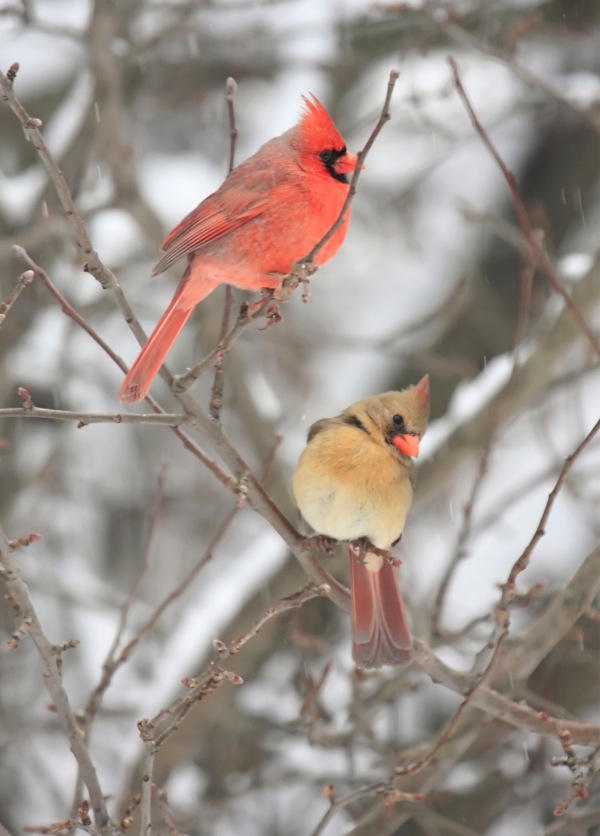
Indiana’s state bird, the northern cardinal, was the most reported in the 2013 Great Backyard Bird Count. © Steve Byland/iStockphoto.com
Celebrate Valentine’s Day by showing your love of birds.
The 17th annual Great Backyard Bird Count will be Feb. 14 through 17. Last year was the first for worldwide reporting and nearly 135,000 lists were submitted, including 2,040 from Hoosiers.
Once a year, citizen scientists join the Cornell Lab of Ornithology, National Audubon Society and Bird Studies Canada to tally the birds they see and enter the results on line. Among North American birds, the northern cardinal registered the most sightings at 46,991 in 2013.
You don’t have to be an expert to participate. Regular everyday people play a vital role in these ongoing initiatives to learn more about birds, said Jim Carpenter, founder, president and chief executive officer of the Indianapolis-based Wild Birds Unlimited with 280 stores, and a sponsor of the four-day event.
Bird populations are dynamic, making it impossible for scientists on their own to observe and document avian activity. This is why individuals are key, he said.
Here are some tips:
- Download the bird list for your area at birdsource.org by plugging in your ZIP Code. There’s also a video that walks explains the process and a downloadable step-by-step guide.
- For 15 minutes at least once during the four-day event, count the type and number of birds you see in one location, such as a bird feeder, tree or shrub. You can count as many times a day, for as many days as you like, for longer than 15 minutes and in different locations, such as a park. Just use a fresh checklist for each location, time and count, said Don Gorney, former president of Amos Butler Audubon.
- Record the most of any species that you see at one time. For instance, during 15 minutes of watching a bird feeder, you see a male and female cardinal and four chickadees. Then you see two male cardinals and three chickadees. So, you would report: two male cardinals, one female cardinal and four chickadees for that period, Gorney said.
Just in case you need some help, in January, Cornell released Merlin, a free iPhone app that identifies 285 North American birds. An Android version should be out this spring.